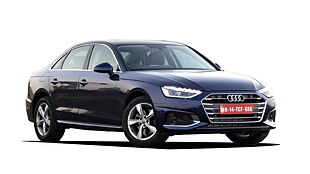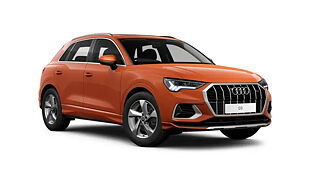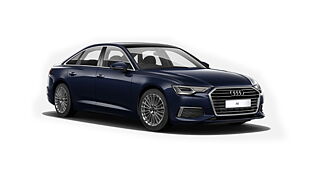Introduction

When Audi launched the brand-new A4 in the petrol variant last year we were really impressed by its all-round ability. Thanks to a more able chassis, the new generation A4 was much nicer to drive than its predecessor and the modern cabin with its ultra-crisp virtual cockpit system just blew us away. With the recent arrival of the diesel variant, the A4 now has a complete portfolio. Time for a full-fledged road test then, since there is no better way to judge its true potential than putting both the petrol and diesel versions through our rigorous testing regime. So we let the numbers decide just how good the new A4 really is.
Design and Style

Like with most German cars, the B9 A4 is more evolutionary than revolutionary as far as looks are concerned. But there are adequate number of elements that make the new car stand out from the old one. The A4 now gets a TT-inspired lower and aggressive front end, which is flanked by an angular bumper. Like with all Audi’s, the full LED headlamps are beautifully detailed and the snazzy daytime running strips lend character to it. The strong shoulder line which stretches all the way from the headlamps to the tail lamps gives it a sporty stance, but the five spoke wheels look far too simple and lack flair. At the rear the tail lamps are stylish and the new A4 looks well-proportioned when viewed from any angle.

Underneath, the new A4 is based on the MLB evo platform which also underpins the recently launched Q7. Like with all modern luxury sedans, the A4 is an extreme exercise of weight saving couple with maximum efficiency. The new A4, in fact, is the lightest in its segment, thanks to Audi’s considerable use of lightweight materials to build this car. The use of expensive magnesium in the steering and transmission components and the rear-seat structure are proof of that. Audi has used lot of aluminium too - bonnet, doors and the boot lid are of aluminium. The multilink front and rear suspension incorporate a large amount of this silvery-white metal. This has helped Audi shave a massive 95kg off the A4 despite it being 25mm longer and 16mm wider. The petrol variant now uses a smaller 1.4-litre motor which weighs less than 100kg. The raised-for-India suspension on the A4 doesn’t get adaptive dampers. As a result, the three driving modes you choose through the Drive Select buttons, alters just the steering, engine and gearbox.
Interiors

But the surprise package of the new A4 lies inside, where you are welcomed by a cabin which is hard to fault aesthetically. Where rivals like the Mercedes C-class exudes elegance and the BMW 3-series practices conservatism, the new A4’s dash looks sci-fi. The horizontal lines dominate, right down to the thin air vents that span the entire width of the dash panel which dupes you into thinking that the car is much wider than it actually is. The wood finish underneath the vents adds a traditional touch to an otherwise snazzy cabin. The air-con controls and knobs are finished in matt chrome and the knurled texture feels very classy every time you operate them. The dash design is based on Audi’s superb Virtual Cockpit theme also seen on the Audi Q7. While you get a conventional high-res MMI screen on top of the dash, the one that sits in place of the conventional instruments makes you feel like Tony Stark inside the ironman suit. All the information you would ever need is right in front of your eyes and the screen resolution and graphics are just unrivalled. The 12.3-inch TFT display can be switched between two different user interfaces. In ‘Infotainment’ mode, a central window dominates the view, providing a large stage for the navigation map or for lists in the phone, radio and audio areas.

The longer wheelbase and width also means that the new A4 has more room on offer on the inside. The big front seats offer generous shoulder and lateral support with just the right amount of suppleness. But it’s at the rear that the new A4 has improved the most. Thanks to the high roof, sliding into the backseat is easy and once in, you will really appreciate the extent of knee-room and width available to you. Since you will be sitting at a good height, visibility from the back is great and thanks to the light beige leather seats, the ambiance is airy and pleasing. In addition, thigh support is fantastic, the backrest is supportive and, unlike the earlier car, there’s plenty of room for your feet as well. The boot too, at 480litres, is big enough and unlike in the BMW and the Merc, the space saver is neatly tucked away and doesn’t eat up into the luggage area.

Safety and Equipment

The petrol engine comes in two variants whereas the diesel comes only in the fully loaded guise. It comes with Audi’s brilliant virtual cockpit system, MMI system with a touchpad, three zone climate control, mobile mirroring, wireless charging, DVD changer, two USB ports, powered front seats, electronic parking brake, reversing camera with front and rear parking sensors, ABS, ESP and 8 airbags. On the other hand, features like rear sun blind and auto park assist were missing from this car.

Engine, Performance and Braking

Let’s start with the diesel engine first. The diesel variant of the new A4 is powered by the same EA288 1968cc four-cylinder turbo-diesel motor as the old car, but its power and torque rating have taken a huge jump and the new A4 diesel now makes a healthy 188bhp and 400Nm of torque. The block is made from heavy cast iron which should help in refinement thanks to the dense metal.

The extra oomph makes the engine feel more flexible and a wider power band means there is more than enough grunt in any given condition. Refinement is very good, performance is ample and this, coupled with the car’s ride, will make it a fine all-purpose machine. The 7-speed dual clutch transmission works really well in tandem and makes full use of the higher power on tap. It responds quickly to the change in position of your right foot at all times and ensures that you are in the meat of the power band. But at lower speeds it does tend to get confused, which results in jerky progress at times. In Comfort mode, it does feel much smoother but here too smoother throttle inputs are recommended. This is where rivals with torque converter transmissions have an edge.
Thanks to the ample power on tap, the A4 diesel posted brisk times against the clock. Despite the A4 bogging down during standstill acceleration tests (the dual clutch gearbox goes into safe mode) it posted a quick time of 7.91 seconds to 100kmph. Thanks to the quick witted transmission, the drivability times of 4.57 seconds for 20-80kmph and 5.79 seconds for 40-100kmph are really impressive.

The petrol variant on the other hand displaces a miniscule 1.4 litres which seems like a very surprising decision, considering rivals offer much larger petrol units. But with the new chassis, Audi has reduced weight considerably, which in turn has allowed it to give the new A4 a downsized engine. Displacing 1395cc, this turbocharged motor is from VW’s EA211 engine family and it develops 148bhp and 250Nm of torque. The high-tech motor is coupled to an equally modern DQ200 7-speed dual clutch automatic.
As soon as you step on the accelerator pedal the motor responds quite well and the A4 feels peppy at low speeds. Peak torque comes in at a low 1500rpm and past that, the mid-range is pretty strong and the engine will pull happily to its 6200rpm redline as well. Like with the diesel the petrol variant gets three driving modes – ‘Comfort’, ‘Dynamic’ and ‘Individual’. In ‘Comfort’, it is programmed to upshift at the earliest, maximising fuel efficiency, whereas in ‘Dynamic’, it will stay in the lowest gear possible. The problem with driving in ‘Comfort’ is that when you need that burst of power, you are usually in a gear too high and have to wait for the gearbox to kick down. ‘Dynamic’ is more responsive but the throttle response becomes too jerky to our liking.
Sure the 0-100kmph time of 9.06 second is decent but, it can’t match its main rivals as far as outright performance is concerned. You also have to work the motor hard to get the best out of it. While the engine is very quiet and smooth at low and cruising speeds, it does get a bit thrummy after 5000rpm, and it isn’t as smooth as say, the bigger 1.8 TSI motor in the old car was.

Ride and Handling

The real sense of luxury in the A4 comes from its suspension setup. At town speeds the A4 simply excels thanks to its absorbent low speed ride, delivered despite the low profile 17 inch tyres. Well-judged spring rates help this German saloon feel supple yet well controlled. Even over rutted surfaces the suspension has a surprisingly good level of crash-free bump absorption and you don’t feel most of its imperfections. Yes, there is some firmness at low speeds but it never gets to the point of feeling uncomfortable. Even at higher speeds the A4 shows good composure and this makes it a soothing highway companion. The car also does an excellent job of cutting out road noise, but at higher speeds you do get a bit of wind noise around the A-pillars.
Where the old car used to feel loose and nervous at high speeds, the new A4 feels rock solid and straight-line stability is exceptional. The A4 changes direction quite eagerly too, but it isn’t particularly engaging to drive. The steering is smooth and accurate but is merely a tool for pointing the front wheels - not gaining any kind of feel for the tyre or road interface. It feels a bit vague at higher speeds too.
Price and Fuel Economy

Thanks to the lighter kerb weight and modern dual clutch transmission, the A4 diesel returned some really impressive figures. It returned 11.5kmpl in the city and an equally impressive 16kmpl on the highway. This gives it an impressive range of 630km thanks to the large 54 litre fuel tank. The downsized petrol motor was impressive too. It returned 10.1kmpl and 15.8kmpl for the city and highway runs respectively.
The prices for the A4 start from Rs 38.1 lakh (ex-Delhi) for the base petrol and go all the way up to Rs 41.2 lakh for the top variant. The Diesel comes in only one variant and it is surprisingly cheaper than the petrol variant with a price tag of Rs 40.2 lakh. Despite being lavishly equipped, the A4 undercuts its German rivals by a considerable margin which makes it great value-for-money.
Verdict

The new A4 is bigger and better in every way and it builds on the previous car’s strengths and addresses some of its main weaknesses to make it a formidable package. It feels thoroughly modern inside and outside and the well-equipped cabin just adds to its appeal. Where the torquey diesel motor has more than enough go, the efficient 1.4-litre petrol feels more than adequate and works well as a chauffeur driven car. Its light controls make it easy to drive, however, enthusiasts will still find the A4 a bit lacklustre especially when compared to the rear wheel driven BMW 320d. The small 1.4 litre petrol motor isn’t particularly thrilling and the handling isn’t as sharp or responsive as we would have liked either. But if you are generally driven around by a chauffeur and only occasionally take the wheel, the A4 just ticks every box perfectly. It’s an ideal choice for normal day-to-day motoring with all the bells and whistles to pamper its owners. The fact that it is well priced makes the deal even sweeter.
Pictures by: Kapil Angane
Specification
| CAR NAME | Audi A4 |
|
| Variant | 35 TDI | 30 TFSI Tecnology Pack |
| ENGINE | ||
| Fuel | Diesel | Petrol |
| Installation | Front, longitudinal | |
| Displacement | 4 cyls, 1968cc | 4 cyls, 1395cc |
| Bore/stroke | 81.0/95.5mm | 71.0/75.6mm |
| Valve gear | 4 valves per cyl, DOHC | 4 valves per cyl, DOHC |
| Power | 187.4bhp at 3800-4200rpm | 147.5bhp at 5000-6000rpm |
| Torque | 400nm at 1750-3000rpm | 250nm at 1500-3500rpm |
| Power to weight | 117.86bhp per tonne | 98.33bhp per tonne |
| Torque to weight | 251.57Nm per tonne | 166.66Nm per tonne |
| Gearbox | 7-speed dual clutch auto | 7-speed dual clutch auto |
| CHASSIS & BODY | ||
| Construction | Monocoque, four-door sedan | |
| Kerb weight | 1590kg | 1500kg |
| Tyres | 225/50 R17 | |
| Spare | Full size | |
| STEERING | ||
| Type | Rack and pinion, electric power steering | |
| Turning circle | 11.6m | |
| BRAKES | ||
| Front | Ventilated discs | |
| Rear | Discs | |
| Anti-lock | Yes | |
Test Data
| PERFORMANCE & BRAKING |
35TDI 30TFSI | |
| 0-20kph | 1.29s | 1.30s |
| 0-40kph | 2.44s | 2.49s |
| 0-60kph | 3.83s | 4.12s |
| 0-80kph | 5.57s | 6.30s |
| 0-100kph | 7.94s | 9.06s |
| 0-120kph | 10.91s | 12.74s |
| 20-80kph in kickdown*/3rd gear | 4.57s | 5.24s* |
| 40-100kph in kickdown*/4th gear | 5.79s | 6.78s* |
| 80-0kph | 22.22m 22.45m | |
| FUEL ECONOMY | ||
| City | 11.5kmpl | 10.1kmpl |
| Highway | 16.0kmpl | 15.8kmpl |
| Tank size | 54 litres | 54 litres |
| Range | 630km | 590km |
| INTERIOR MEASUREMENTS | ||
| Front | ||
| Kneeroom(Max/min) | 880/700mm | |
| Headroom(Max/min) | 980/900mm | |
| Shoulder room | 1400mm | |
| Seat base length | 510mm | |
| Backrest height | 640mm | |
| Rear | ||
| 1m kneeroom | 690mm | |
| Kneeroom(Max/min) | 810/570mm | |
| Headroom | 930mm | |
| Shoulder room | 1340mm | |
| Seat base length | 490mm | |
| Backrest height | 690mm | |
| Boot | 480 litres | |
| Depth/width/height | 1080/1010/490mm | |

![Audi A4 [2016-2020] Image Audi A4 [2016-2020] Image](https://imgd.aeplcdn.com/272x153/cw/ec/22613/Audi-A4-Right-Front-Three-Quarter-165484.jpg?wm=0&q=80)

























